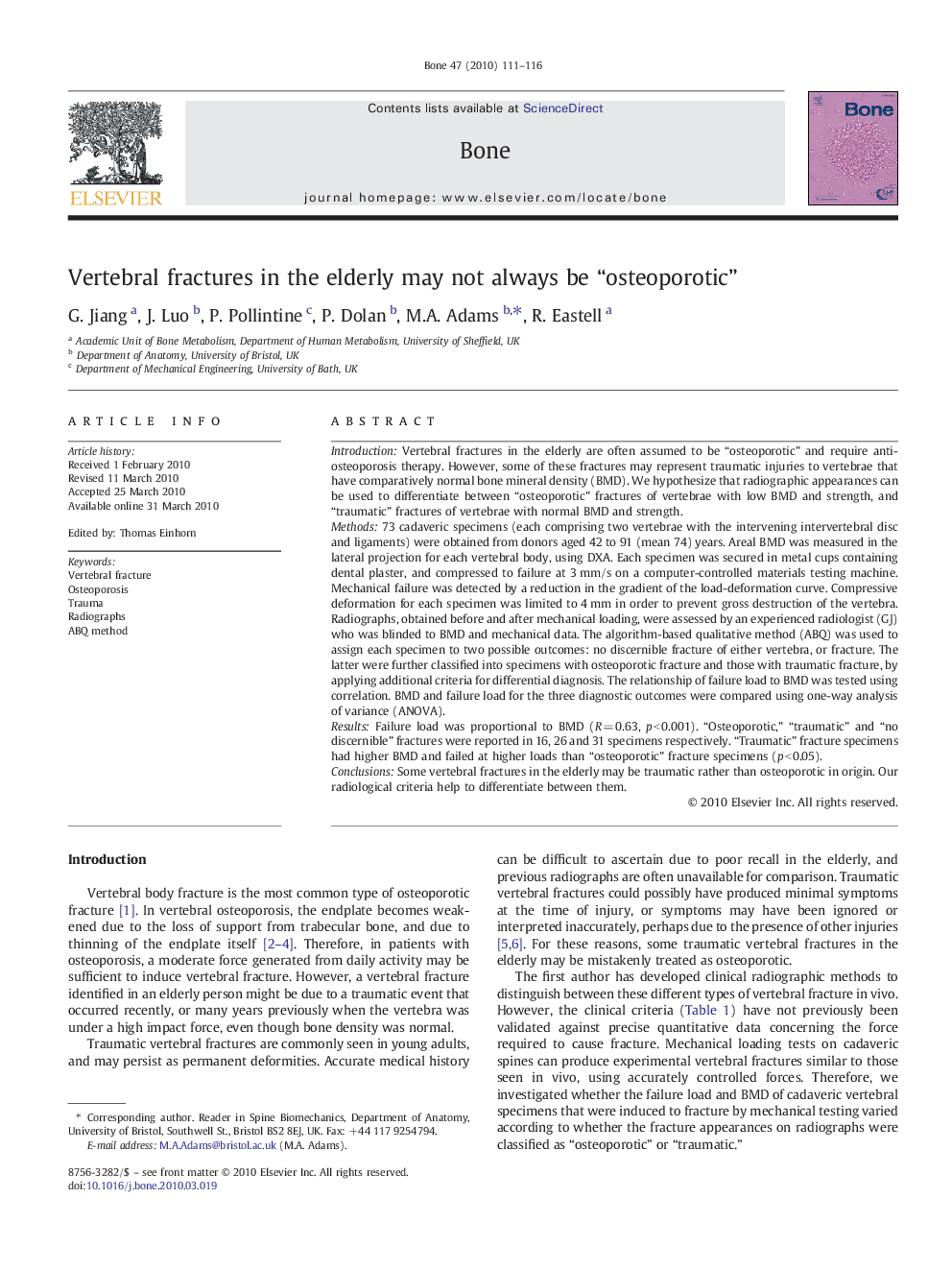| کد مقاله | کد نشریه | سال انتشار | مقاله انگلیسی | نسخه تمام متن |
|---|---|---|---|---|
| 2780866 | 1153308 | 2010 | 6 صفحه PDF | دانلود رایگان |

IntroductionVertebral fractures in the elderly are often assumed to be “osteoporotic” and require anti-osteoporosis therapy. However, some of these fractures may represent traumatic injuries to vertebrae that have comparatively normal bone mineral density (BMD). We hypothesize that radiographic appearances can be used to differentiate between “osteoporotic” fractures of vertebrae with low BMD and strength, and “traumatic” fractures of vertebrae with normal BMD and strength.Methods73 cadaveric specimens (each comprising two vertebrae with the intervening intervertebral disc and ligaments) were obtained from donors aged 42 to 91 (mean 74) years. Areal BMD was measured in the lateral projection for each vertebral body, using DXA. Each specimen was secured in metal cups containing dental plaster, and compressed to failure at 3 mm/s on a computer-controlled materials testing machine. Mechanical failure was detected by a reduction in the gradient of the load-deformation curve. Compressive deformation for each specimen was limited to 4 mm in order to prevent gross destruction of the vertebra. Radiographs, obtained before and after mechanical loading, were assessed by an experienced radiologist (GJ) who was blinded to BMD and mechanical data. The algorithm-based qualitative method (ABQ) was used to assign each specimen to two possible outcomes: no discernible fracture of either vertebra, or fracture. The latter were further classified into specimens with osteoporotic fracture and those with traumatic fracture, by applying additional criteria for differential diagnosis. The relationship of failure load to BMD was tested using correlation. BMD and failure load for the three diagnostic outcomes were compared using one-way analysis of variance (ANOVA).ResultsFailure load was proportional to BMD (R = 0.63, p < 0.001). “Osteoporotic,” “traumatic” and “no discernible” fractures were reported in 16, 26 and 31 specimens respectively. “Traumatic” fracture specimens had higher BMD and failed at higher loads than “osteoporotic” fracture specimens (p < 0.05).ConclusionsSome vertebral fractures in the elderly may be traumatic rather than osteoporotic in origin. Our radiological criteria help to differentiate between them.
Journal: Bone - Volume 47, Issue 1, July 2010, Pages 111–116